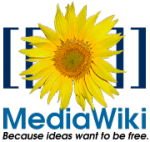EDT4OL/Snapshot/Publishing model
The web publishing model for this course uses a collaborative wiki environment for OER development to make re-use and re-mix possible. A collection of wiki pages are published to a WordPress content management system, using a snapshot process built around open source scripts.
Many websites use a content management system (CMS) for publishing, editing and modifying content. The CMS avoids the need for detailed knowledge of HTML (HyperText Markup Language), the standard 'code' for creating web pages. However, when it comes to course development and design, most systems are typically not designed for large scale collaboration with detailed version history, or to enable re-use of the content on different websites. Using wiki technology provides an alternative to a CMS, as it is expressly designed for large scale collaboration with detailed version control. In this course, we have combined wiki and CMS technology to achieve the best of two worlds.
Technologies
The ability to re-use and re-mix online content is a key point of difference for OER when compared to closed proprietary content. A key focus of the OER Foundation, which hosts the technology for this course, is to encourage and develop sustainable ecosystems for mainstream adoption of open education approaches. This technology approach provides solutions for Ministries of Education and institutions to easily implement their own website versions of open courses which re-use existing wiki content. All the software code we use to harvest wiki pages and to publish course websites is released under an open source software licence, which can be reproduced by anyone with the relevant technical knowledge. In summary, the delivery process involves:
- Developing an outline page which links to a collection of individual wiki pages for your course website
- Setting up a WordPress installation on the internet. The OER Foundation will provide free access to a WordPress site to EDT4OL students for the duration of the course. We will provide instructions on how to download a back-up of your content in case you wish to set up your own WordPress site in the future.
- Using a web service to harvest the collection of your wiki pages specified on the outline page for import into WordPress. This will apply a professional theme to your website, using a responsive design framework for viewing on mobile devices. This process will automatically generate the website navigation, next and previous buttons, and other layout features.


